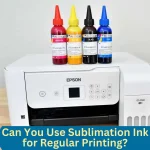Sublimation ink has become increasingly popular due to its vibrant colors and durability. But, when it comes to removing sublimation ink stains, the burning question is whether acetone can effectively remove them.
Acetone is a solvent that is often used to remove sublimation ink. It is a clear, colorless liquid that is flammable and explosive. Yes, acetone is effective at dissolving sublimation ink and removing it from different substrates, but it can also damage some materials.
So, whether you are an artist, a fabric printer, or a tumbler enthusiast, understanding the capabilities of acetone as a potential solution is crucial to fix unexpected mistakes.
Contents
- Understanding Sublimation Ink
- Acetone: Properties and Applications
- The Science Behind Sublimation Ink Removal
- Will Acetone Remove Sublimation Ink from Fabric?
- Will Acetone Remove Sublimation Ink from Tumbler?
- Step 1: Gather the necessary materials
- Step 2: Put on your latex gloves and protective eyewear
- Step 3: Choose a well-ventilated area
- Step 4: Dip a cotton ball or soft cloth into the acetone
- Step 5: Test a small area
- Step 6: Apply acetone to the inked areas
- Step 7: Continue rubbing and reapplying acetone
- Step 8: Rinse the tumbler thoroughly
- Step 9: Dry and inspect the tumbler
- Pros and Cons of Using Acetone
- Alternative Methods for Sublimation Ink Removal
- Conclusion
- Frequently Asked Questions
Understanding Sublimation Ink
Sublimation ink is a unique type of dye-based ink used in various industries, including textile printing, graphic design, and promotional product manufacturing. It is often used to create custom-made items, such as t-shirts, mugs, and tumblers.
Unlike traditional inks, sublimation ink goes through a process called sublimation, where it transitions from a solid to a gas without passing through a liquid phase. This allows the ink to penetrate the surface of the material, resulting in a permanent, vibrant, and long-lasting print.
However, the durability of sublimation ink can also pose challenges when it comes to removing it. Sublimation ink tends to bond strongly with the materials, making it resistant to typical cleaning methods. Therefore, finding an effective solution for sublimation ink removal is essential.
Acetone: Properties and Applications
Acetone, a colorless liquid with a distinct smell, is a commonly used solvent found in many household products. Its chemical properties, including its low viscosity and high evaporation rate, make it an effective cleaner and solvent for various substances.
Acetone is known for its ability to dissolve or break down many compounds, including plastics, paints, varnishes, and certain types of inks.
As a solvent, acetone interacts with sublimation ink by breaking down its chemical bonds. This breakdown weakens the ink’s adhesion, making it easier to remove from surfaces.
However, one should understand the potential limitations and proper application of acetone when it comes to sublimation ink removal.
Note: Acetone should not be used to take off sublimation ink from fabrics that are made from natural fibers, such as cotton or wool. Here are the best alternative methods to remove sublimation ink and fix mistakes on cotton shirts.
The Science Behind Sublimation Ink Removal
To understand the science behind sublimation ink removal, let’s examine the chemistry involved.
Sublimation ink typically consists of dyes or pigments suspended in a liquid carrier. When heat is applied, the ink undergoes sublimation and turns into a gas. Upon cooling, the gas reverts to a solid state, bonding with the material.
Removing sublimation ink stains requires breaking these bonds between the ink and the surface. When acetone is applied to sublimation ink, it dissolves the ink and turns it into a gas. The gas then evaporates, taking the ink with it.
However, the effectiveness of acetone at removing sublimation ink depends on a number of factors, including the type of substrate, the age of the ink, the ink formation, and the amount of ink that needs to be removed.
Will Acetone Remove Sublimation Ink from Fabric?
Fabric is a commonly used material for sublimation printing. Acetone can be an effective solvent for removing sublimation ink stains from certain types of fabric, particularly polyester.
Polyester fabrics are more receptive to acetone due to their synthetic nature, allowing the solvent to break down the ink and lift it from the fibers. On the other hand, you should be cautious while removing the stains from organic fabric, as acetone can damage or discolor delicate or non-synthetic fabrics.
Now, whether it’s a shirt, a cushion cover, or a tablecloth, here’s a step-by-step guide that I practice for removing sublimation ink from fabric using acetone.
Step 1: Test in an inconspicuous area
Before proceeding with the stain removal process, test a small, hidden area of the fabric to ensure compatibility and prevent any potential damage.
Step 2: Blot the stain
Start by blotting the stain gently with a clean cloth or paper towel to remove any excess ink. This step is mostly required when it’s a recent spill or fresh stain, and the ink is not completely dried yet.
Step 3: Apply acetone
Moisten a clean cloth with acetone and gently press the stained area. Avoid rubbing harshly, as this can spread the ink further into the fabric.
Step 4: Blot and repeat
Continue blotting the stained area with the acetone-soaked cloth, frequently switching to a clean section of the cloth. Repeat this process until the stain starts to fade.
Step 5: Rinse and wash
After the ink stain is significantly reduced, rinse the fabric thoroughly with water to remove any residual acetone.
Finally, wash the fabric as per the care instructions to remove any remaining traces of ink and acetone, and to complete the cleaning process.
Dangers Involved:
You might encounter challenges during this session. such as stubborn stains or the potential risk of fabric damage.
Acetone can potentially remove dyes or cause discoloration on certain fabrics, so always test in an unnoticeable area first. Also, avoid excessive saturation of the fabric with acetone, as it may damage the fabric’s integrity.
Will Acetone Remove Sublimation Ink from Tumbler?
Sublimation ink is also commonly used on tumblers, especially those made of materials like stainless steel or coated ceramics. Acetone can be effective in removing sublimation ink from these surfaces.
Here’s a step-by-step guide for removing sublimation ink from a tumbler using acetone:
Step 1: Gather the necessary materials
You will need:
- Acetone
- Latex gloves
- Protective eyewear
- Cotton balls or soft cloth
- A well-ventilated area to work in
Remember to wear gloves and safety glasses when using acetone.
Step 2: Put on your latex gloves and protective eyewear
It’s essential to protect your skin and eyes from the acetone, as it can be harsh on the skin and harmful if it gets into your eyes.
Step 3: Choose a well-ventilated area
Acetone fumes can be strong, so it’s crucial to work in a well-ventilated space. Consider working outdoors or in a well-ventilated room with open windows (I prefer the outdoor patio or backyard).
Step 4: Dip a cotton ball or soft cloth into the acetone
Take a cotton ball or soft cloth and soak it with acetone. Make sure it’s wet but not dripping.
Step 5: Test a small area
Before applying acetone to the entire tumbler, it’s wise to test it on a small, inconspicuous area to ensure it doesn’t damage the surface.
Apply the acetone to a small spot and observe the reaction for a few seconds. The acetone does not work the same on all materials, so it is better to test it first and see how would be the end results.
Step 6: Apply acetone to the inked areas
If the acetone doesn’t cause any damage during the test, proceed to apply it to the sublimation-inked areas of the tumbler. Gently rub the cotton ball or cloth on the inked surface using small circular motions.
Step 7: Continue rubbing and reapplying acetone
Depending on the intensity of the ink and the type of tumbler material, you may need to continue rubbing and reapplying acetone until the ink starts to dissolve and come off.
Be patient and avoid scrubbing too aggressively, as it may damage the tumbler’s surface.
Step 8: Rinse the tumbler thoroughly
Once the ink has been removed, rinse the tumbler with warm water to remove any remaining acetone residue.
This step is important to ensure that no traces of acetone or ink remain on the surface.
Step 9: Dry and inspect the tumbler
After rinsing, dry the tumbler with a clean, soft cloth. Inspect the surface to ensure all the ink has been removed. If there are still traces of ink, you may need to repeat the process or consider alternative methods.
Note: Use the same method to remove sublimation ink from mugs.
Pros and Cons of Using Acetone
Using acetone for sublimation ink removal has its advantages and considerations. Let’s explore the pros and cons:
Pros:
- It is readily available
- Affordable solvent to remove sublimation ink
- It evaporates quickly, leaving behind minimal residue
- Acetone can effectively dissolve and remove sublimation ink from compatible surfaces, saving time and effort.
Cons:
- Acetone has a strong odor and is flammable
- It can also be harsh on certain materials, leading to damage or discoloration
- Acetone can cause skin dryness and irritation, and inhaling its vapors can irritate the respiratory system.
Alternative Methods for Sublimation Ink Removal
If acetone is not suitable for your specific situation or material, alternative methods can be explored for sublimation ink removal.
Here are some alternatives worth considering:
1. Specialized Ink Removers
These are specifically formulated to dissolve and remove sublimation ink stains from various surfaces. These removers often come in the form of sprays or liquid solutions. They are designed to target the specific chemical properties of ink, making them effective in lifting sublimation ink stains.
2. Isopropyl alcohol
Isopropyl alcohol can be effective in removing sublimation ink from certain surfaces. Similar to acetone, it’s important to test compatibility and follow proper safety precautions.
3. Natural Solvents
Natural solvents can also be used to remove sublimation ink stains. Rubbing alcohol and white vinegar are commonly recommended for this purpose. These solvents have the ability to break down ink pigments and lift them from the surface.
Conclusion
In conclusion, acetone can be used to remove sublimation ink from multiple substrates. It can successfully dissolve and remove sublimation ink from compatible surfaces such as polyester fabric and certain tumbler materials.
But it is important to test the acetone on an unnoticeable area of the fabric first to make sure that it does not damage the fabric. However, acetone should not be used to remove sublimation ink from tumblers or other items made of plastic.
Frequently Asked Questions
What can remove sublimation ink?
Sublimation ink can be effectively removed using acetone, its powerful solvent properties make it a top contender for tackling those stubborn ink stains.
You can also turn to specialized ink removers specifically designed for this task. If you prefer a more natural approach, rubbing alcohol or white vinegar can do the trick.
Is there a way to remove sublimation ink from a shirt?
Yes, sublimation ink stains on shirts can be a bummer, but fear not, we have some tricks to save the day (and your shirt). Acetone is a popular choice, but do it carefully. Before going all-in, perform a patch test on a discreet area of the fabric to ensure compatibility and avoid any unpleasant surprises.
Does rubbing alcohol remove sublimation ink?
Yes, rubbing alcohol can be used as a natural solvent to remove sublimation ink stains. It has the ability to break down ink pigments and lift them from the surface.
Will bleach remove sublimation ink?
Bleach is generally not recommended for removing sublimation ink stains. Bleach is a strong and harsh chemical that can cause discoloration or damage to fabrics and other surfaces.
It is best to avoid using bleach for sublimation ink removal and instead opt for safer and more appropriate methods such as acetone or specialized ink removers.
- 5 Best 13×19 Sublimation Printer for Wide Format Substrates - December 27, 2023
- Best 11×17 Sublimation Printer to Print Tabloid Size Paper - December 26, 2023
- Epson ET-8550 vs ET-15000: Best Wide-Format EcoTank Printer - December 25, 2023

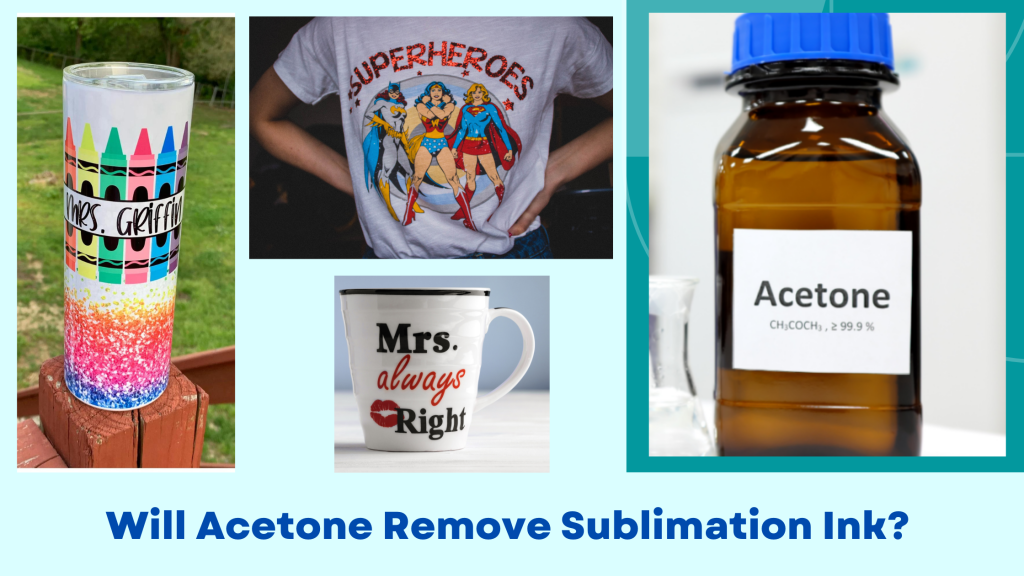
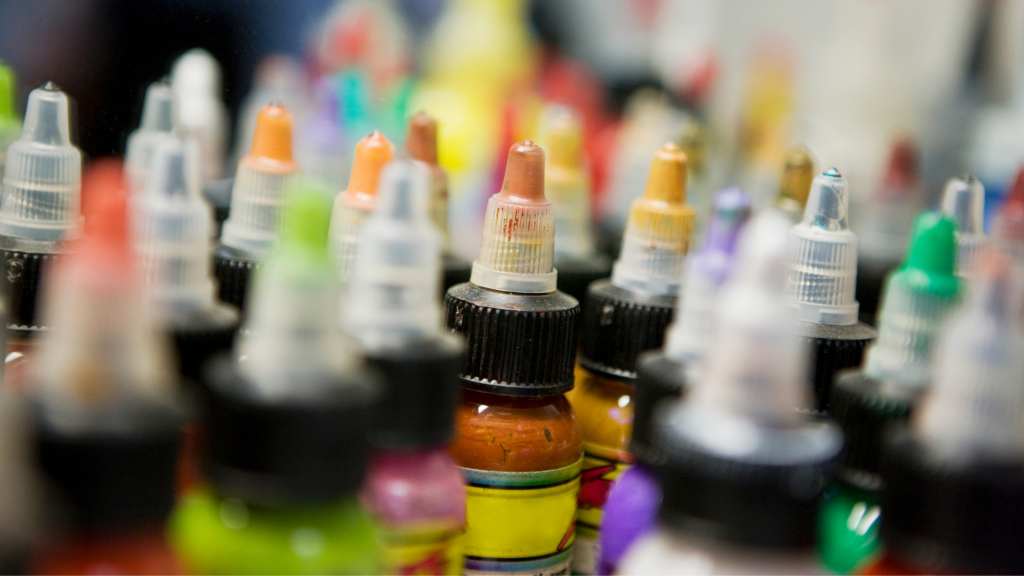
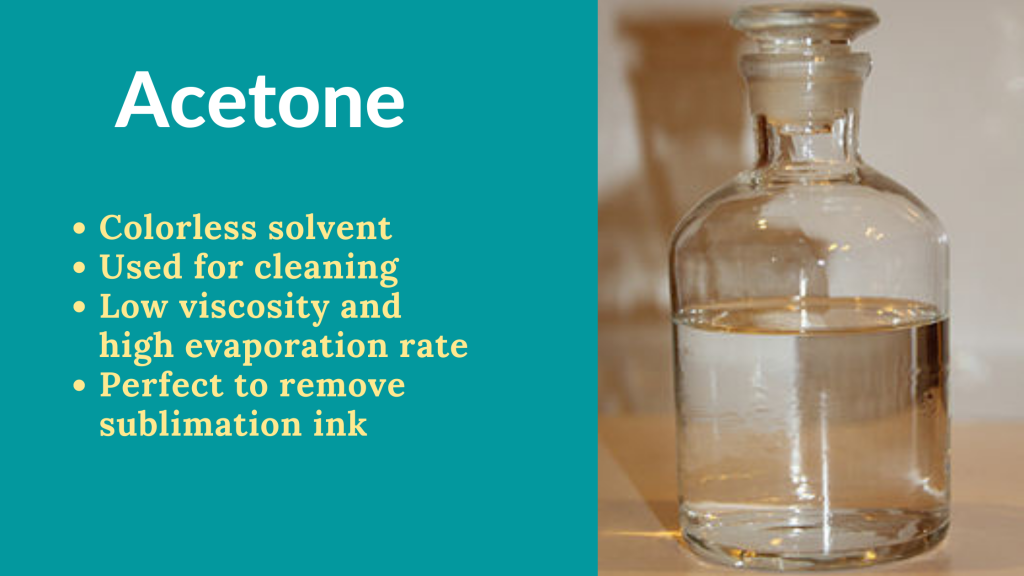
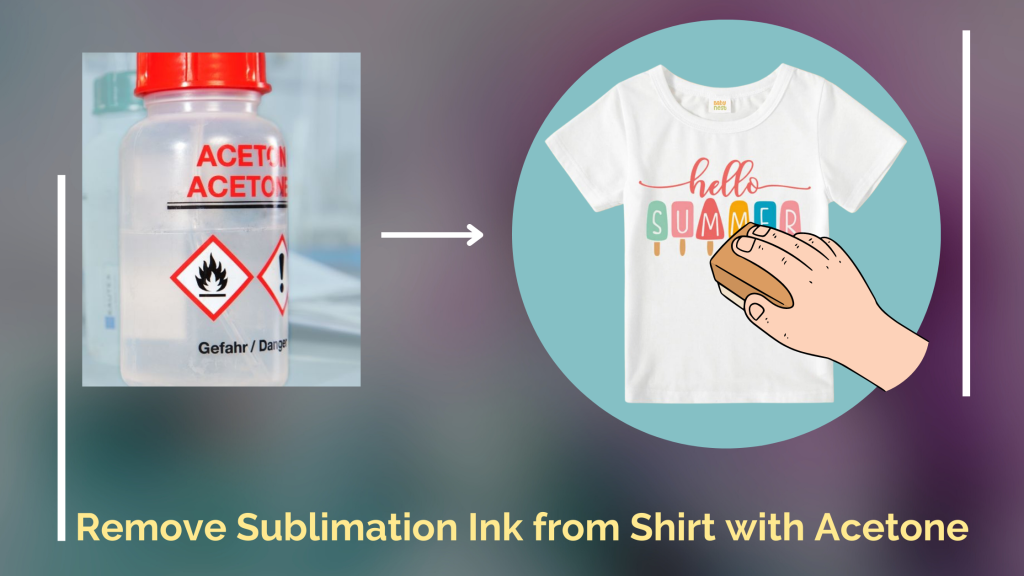
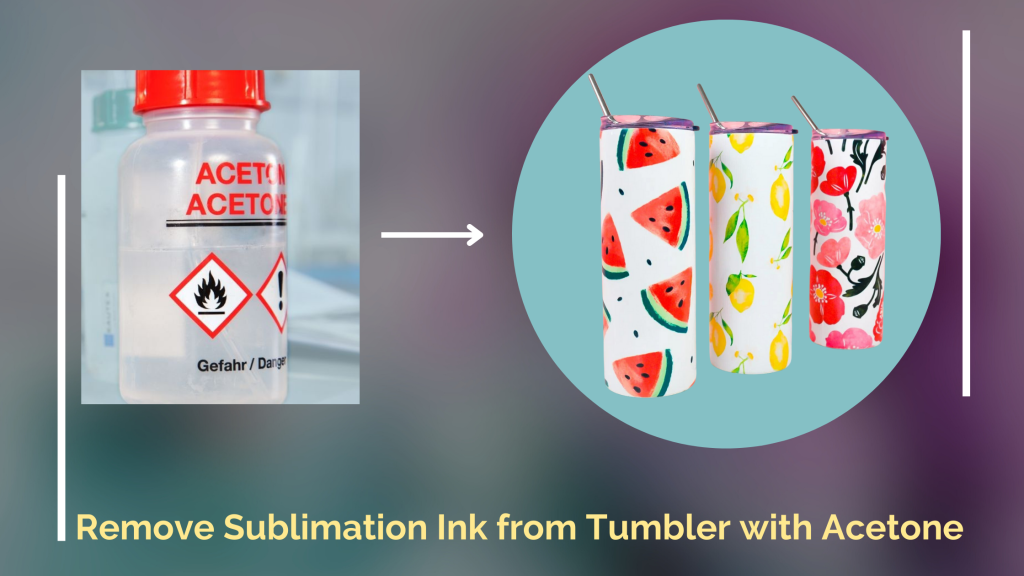
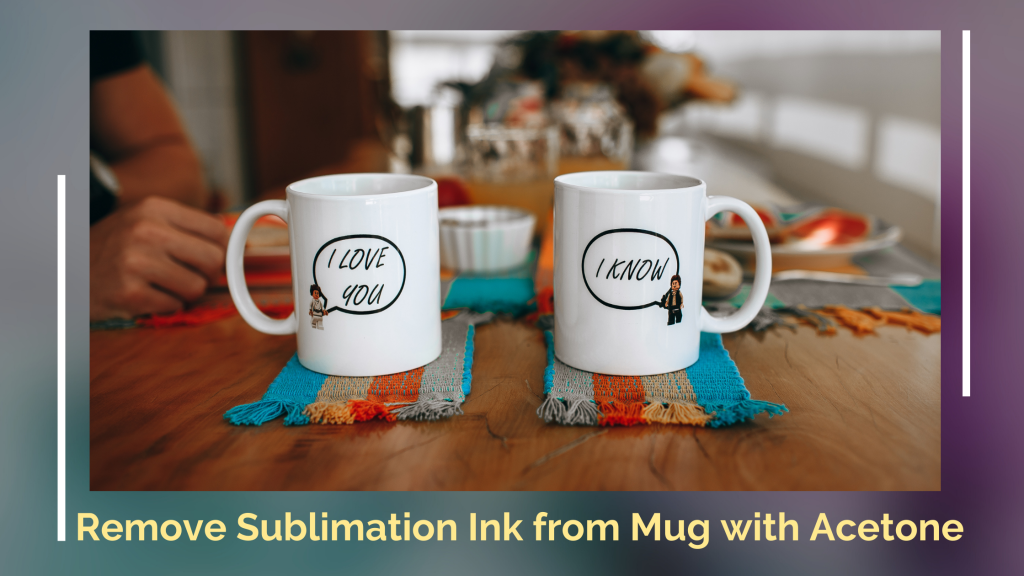
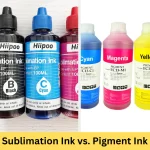

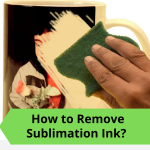
![What Is Sublimation Ink and How Does It Work? [Read Its Uses] What Is Sublimation Ink](https://subliprinting.com/wp-content/uploads/2022/04/What-is-sublimation-ink-150x150.png)

